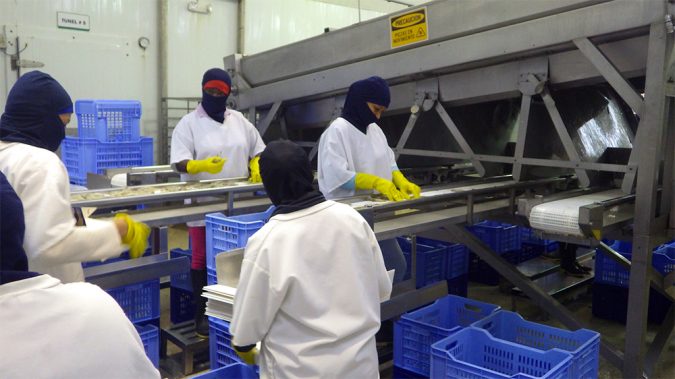Final stages include receiving protocols at processing plants, weighing, grading and freezing
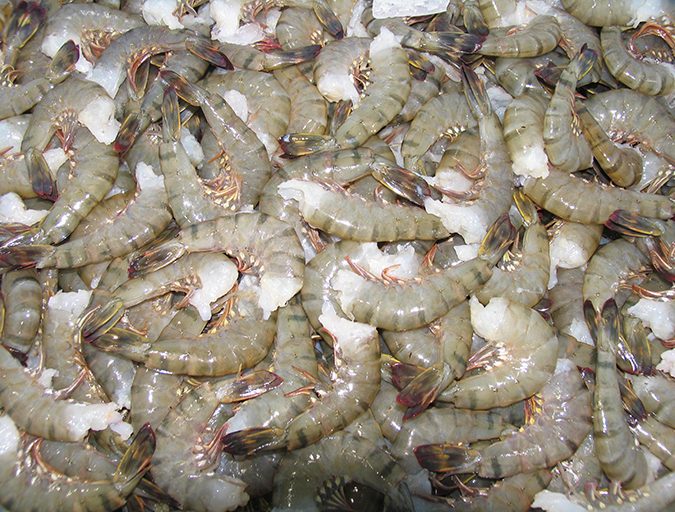
Reception
As soon as the harvested shrimp arrive at the packing plant, they must be unloaded from the transport truck and transferred to a positive cold room while waiting to be processed. The Quality Control (QC) team must collect a representative sample to check the organoleptic quality of the batch and direct it straight to the type of packaging (HOSO, HLSO, value added, etc.) which the batch is most suitable for. If necessary, a control of sulfite residual levels should be done at this time to check if the batch is in compliance.
Packing plant temperature, personnel equipment
During the shrimp harvest from ponds, special attention must be given to chill the animals as quickly as possible and to keep them at a temperature lower than 3 degrees-C. All these efforts would be wasted if the temperature of the shrimp rises during their processing at the packing plant because the temperature there is too warm.
At the packing plant, all processing must be done very fast, with the objective of a maximum time of 2 minutes between the moment the shrimp are removed from the chilled wash tank in the reception area until the time they are placed in the freezer. During this time the temperature of the shrimp must stay below 3 degrees-C.
This is only possible if the ambient temperature in the processing rooms is lower than 12 degrees-C. Personnel working in these areas must wear appropriate clothing to keep them warm. Personnel working in a packing plant must be dressed properly to maintain good hygiene in the plant. Supervisors must never accept a worker without the proper uniform and equipment.
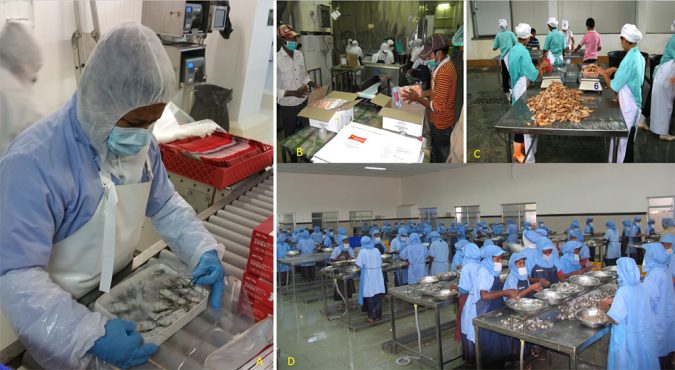
Inspection and grading
Shrimp inspection and grading are fundamental steps to ensure the quality of the final product. It is at this level that shrimp must be removed if they show defects that make them non-compliant with product specifications. Any defective product that manage to slip by through this control will end up as part of the finished product and will negatively affect its overall quality.
Properly designed and installed washing receiving tanks and inspection belts are important equipment for the inspection and removal of soft/broken product prior to feeding the batch to the grader. To be effective without affecting the performances of the plant, shrimp must be distributed in a single layer over the entire width of the inspection carpet. If shrimp are in several layers, workers cannot effectively identify and remove defective shrimp in the lower layers.
To be efficient, the wash tank must be equipped with at least a jet wash system, an ice baffle to keep out the ice from the inspection belt, and a volume control paddle to control the flow of shrimp on the inspection belt. The wash tank must be able to hold a significant amount of ice to keep the shrimp chilled, but this ice must not be moved to the inspection belt because it would disturb and distract the workers there; and if it were to reach the packing box it could result in inaccurate net weights of shrimp. The paddle to control and maintain a steady flow of shrimp is a key piece of equipment; it maintains a constant flow of clean shrimp in a single layer – without one, the flow of shrimp would vary from over-loaded to under-loaded depending on the shrimp volume in the wash tank.
The inspection belt should be large enough while allowing operators working on each side to be able to reach the shrimp moving through in its middle part. If the belt is too narrow, it will not move enough shrimp in a single layer to support optimum performance. The belt must be long enough to allow for enough workers to properly sort the shrimp. The number of people needed to work the inspection belt depends on the quality of the raw products and the amount of shrimp that must be removed.
Properly organizing these personnel is important. Usually it is best to have a team of two to four workers on each side of the belt, depending on the quality of the raw material. The staff must be organized as a squad with a specific task for each one. The first two workers after the wash tank are the ones who remove most of the waste (like pebbles, fish and other undesirables), and the remaining workers remove any defective shrimp. One of the last persons on the belt, the nearest to the elevator to the grader, must be the leader of the squad. He/she must carry out his/her production job and also control the efficiency of each member of the squad by providing proper, timely instructions and guidance to improve the efficiency of the process.
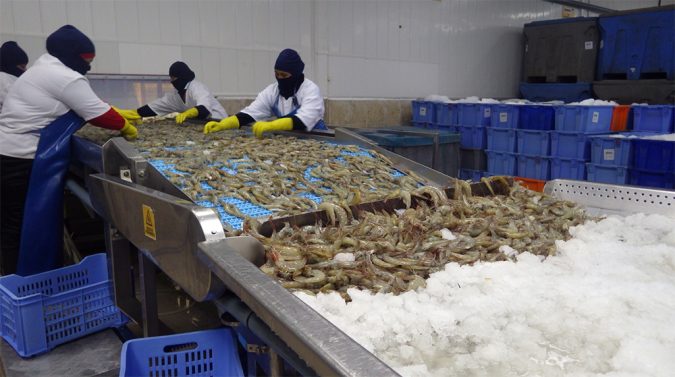
Classification and calibration
It is very important to properly define product classification with the marketing department; especially the number of pieces per unit of weight and their uniformity. Nowadays, most of the time the calibration of the shrimp is done mechanically using a special grader. It is important that the grader used is designed for the specific shrimp species. Often we find graders designed for cold-water shrimp (Pandalus) species and these machines often present problems when dealing with penaeid species, especially in regards to achieving good size uniformity. Pandalus species are very different from Penaeus species – which comprise basically the entire volume of farmed shrimp globally – in particular because of the antennas of the latter (tropical species) are longer.
Grading machines for temperate shrimp (non-tropical) are designed with grading channels composed of only two rollers each. The graders for tropical shrimp have four rollers per channel, and this prevents the wrapping of the shrimp antennas around the rollers, preventing the shrimp from being classified into the wrong size category. When their antennas are wound around the rollers, shrimp can accumulate in the channel caused by the trapped shrimp, or they can pass to the other side of the roll and fall outside the channels, causing numerous size classification errors. Particular attention should also be paid to not overloading the grader, as each machine is designed to have a maximum handling capacity. Exceeding it will also cause many errors in classification regardless of the type of grader.
Each chute of the grader must be equipped with a lateral belt, where a last inspection is done before the shrimp fall into the box or in the mold to be frozen. This inspection is the last opportunity to pick out any non-conforming shrimp or foreign material before the packing process begins.
Determining shrimp weight
The net weight in the boxes is very often a source of conflict between packers and clients. The complex anatomy of shrimp does not allow rapid drainage of water that can coat the animal. Often it is not easy to rapidly drain the box completely, and the shrimp can lose water and therefore weight.
The Codex Alimentarius (internationally recognized standards, codes of practice, guidelines and other recommendations pertaining to food production, foods and food safety) has defined a very precise method for the control of the net weight, in particular regarding the draining time before weighing, which is a parameter that must be made clear with, and agreed with the client. It states: “Empty the contents of the container on the previously weighed sieve with nominal size of the square aperture 2.8 mm (ISO Recommendation R565) or alternatively 2.38 mm (US No. 8 Standard Screen). Incline the sieve at an angle of about 20 degrees and drain for two minutes.” (CODEX STAN 092-1981, Rev. 1- 1995).
In practice, it is not possible to have a draining period before weighing the shrimp boxes. Therefore, it is necessary to make the best estimate of the amount of water lost during this time, empirically, by weighing a series of boxes before and after draining. The weighing scales are then adjusted to account for this loss of water.
After been weighed, the shrimp should then be properly arranged to prevent parts from exceeding the capacity of the boxes. It often happens that the shrimp are not properly placed in the boxes, with parts left outside the boxes, and after freezing most of these pieces outside the edges of the boxes will be broken off during the placement in cartons. This will increase the percentage of defaults and affect product quality, due to an incorrect and easily correctable practice.
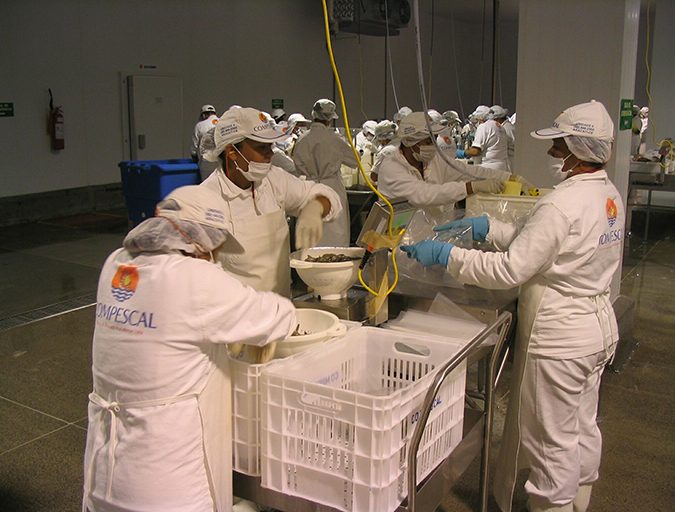
Considerations on product freezing
There are several techniques used to deep freeze shrimp products, but the two used the most are the air blast freezer and the contact plate freezer. There are other techniques such as IQF (Individually Quick Frozen) spiral freezers, brine freezers by immersion or by aspersion, single retention time (SRT) tunnel freezers, cryogenic tunnel freezers using nitrogen, and other equipment.
Each system has its own advantages and disadvantages depending on the desired type of final product, such as 2-kg blocks, IQF bags and others, and the equipment selected must consider the final types of products. For example, spiral freezing tunnels are not suitable to freeze 2-kg blocks, and IQF products should not be frozen on shelves in a typical air blast freezer.
The choice of the freezing technology used must consider several criteria. Foremost is what type of products will be processed and frozen, and for what final product presentations. Also, to consider that deep-freezing involves products reaching a temperature at their core equal or lower than minus-18 degrees-C.
The faster the freezing process is, the smaller are the resulting intracellular ice crystals that form in the shrimp flesh, and the better will be the product after been thawed. With a low exudation during thawing, the shrimp products better maintain all their taste. In contrast, a slow freezing process will induce the formation of larger ice crystals that damage the cell walls and result in water loses during thawing and will affect product quality.
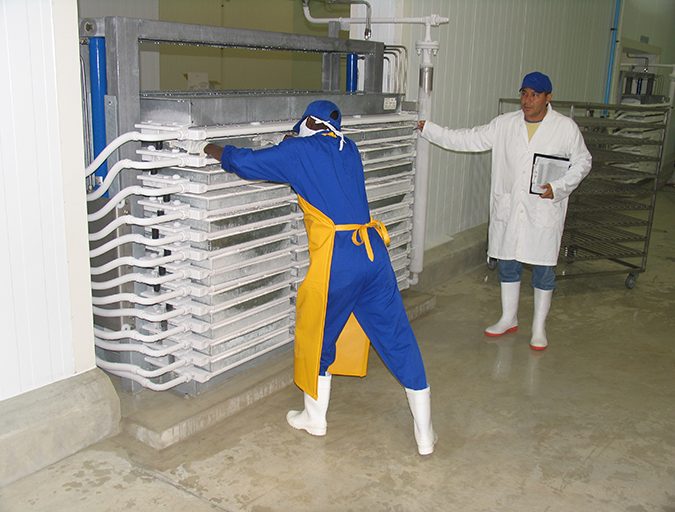
Packing, storage and container loading
Frozen shrimp are fragile and improper handling of these frozen products often causes physical breakage. All packing steps, including loading of master cartons into transport containers, must be done carefully to avoid rough handling and prevent physical damage. Often the responsible QC team may not properly supervise these steps with enough attention, considering that they are dealing with finished products.
When the master cartons of finished shrimp products are placed into master cartons and stored in a negative cold room, these masters are generally deep-stacked on top of each other. The rooms should be equipped with racks in order to facilitate product handling, but this is not always the case, potentially resulting in excessively high, stacked cardboard boxes. The master cartons used to pack finished shrimp products have a limited resistance to crushing that must not be exceeded, at the risk of product quality suffering.
If the frozen products are stored in negative cold storage (less than minus-18 degrees-C), it is important to consider that each cold room has a maximum capacity. Not only in terms of volumes, but also in terms of energy requirements. If the room is overloaded, the evaporators may not have the capacity to maintain the required low temperatures. In this case, the temperature of the shrimp products could be higher than desired and their resistance to crushing lower.

Traceability
The traceability of a finished product is a very important tool not only for the consumer but also for the producer. To be able to follow the history of each batch of shrimp all the way from the hatchery to the resulting processed, frozen products (“cradle to plate”) helps shrimp farmers and packers follow all necessary procedures to assure products can be traced with confidence and reliability. This is becoming more and more important as customers and end-users become increasingly better educated and discriminating about the shrimp products they consume.
Also, in the case of claims, the more robust the traceability system in place is, the easier it is to detect non-compliance and to implement corrective actions when warranted. If issues are detected requiring the rejection of some products, a well-designed and implemented traceability system will accurately and timely identify those product batches with issues and will reduce product quantities to be remove from the marketing channels. It is, therefore, essential to be able to identify all steps the products go through from their points of origin and to be very careful to never lose that traceability while avoiding mistakes. Traceability begins with establishing a simple and accurate coding system.
Perspectives
For any country producing farmed shrimp for any markets, there really is no reason to not obtain the highest quality final product if the shrimp come out of the ponds during their harvest in very good conditions. As the farmed shrimp industry expands, more shrimp will reach all markets and more customers, and product quality requirements will continue increasing as customers become better educated and more discriminating.
Improving product quality should be a continuous process based on practical information and processes. One should always strive to achieve the best possible quality and to take all necessary measures to reach this objective, while at the same time controlling production costs. This should be a goal for all personnel at shrimp aquaculture and processing facilities.
These measures often involve following well-established procedures and common sense, and do not require any additional investment. However, it is necessary that the harvesting and processing equipment and facilities are properly designed, equipped and operated, considering current and anticipated markets and their demand. The design of the packing plant should include flexibility to change and adjust as market demands evolve.
And it is vital to keep in mind that as important as it is to have a good quality product, it is equally important to always have the customers’ preference.
References available from author.
Now that you've reached the end of the article ...
… please consider supporting GSA’s mission to advance responsible seafood practices through education, advocacy and third-party assurances. The Advocate aims to document the evolution of responsible seafood practices and share the expansive knowledge of our vast network of contributors.
By becoming a Global Seafood Alliance member, you’re ensuring that all of the pre-competitive work we do through member benefits, resources and events can continue. Individual membership costs just $50 a year.
Not a GSA member? Join us.
Author
-

Hervé Lucien-Brun
Aquaculture & Qualite
9, rue Poupinel, F-78730 Saint Arnoult en Yvelines, France[109,111,99,46,108,105,97,109,103,64,98,108,101,118,114,101,104]
Related Posts
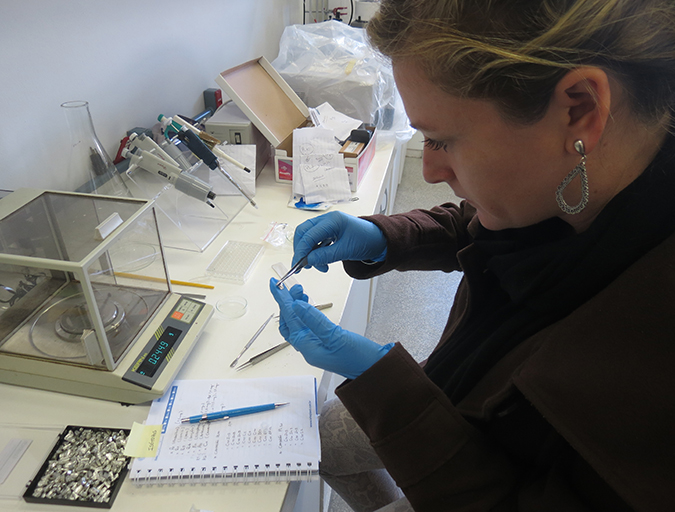
Aquafeeds
Biofloc consumption by Pacific white shrimp postlarvae
The stable isotopes technique with δ13C and δ15N can be used to determine the relevance of different food sources to shrimp feeding during the pre-nursery phase of Litopenaeus vannamei culture. During this trial, different types of commercial feed, microalgae, Artemia sp. nauplii and bioflocs were used as food sources.
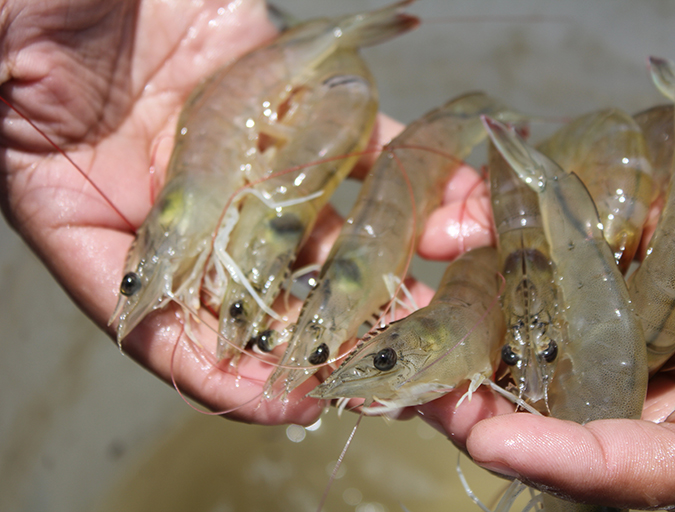
Aquafeeds
Testing shrimp growth in different biofloc systems
A study conducted with juvenile shrimp (Litopenaeus vannamei) reared in experimental biofloc systems used four treatments. Results indicate that differences in management and carbohydrate source can lead to substantial disparity in system function and production.
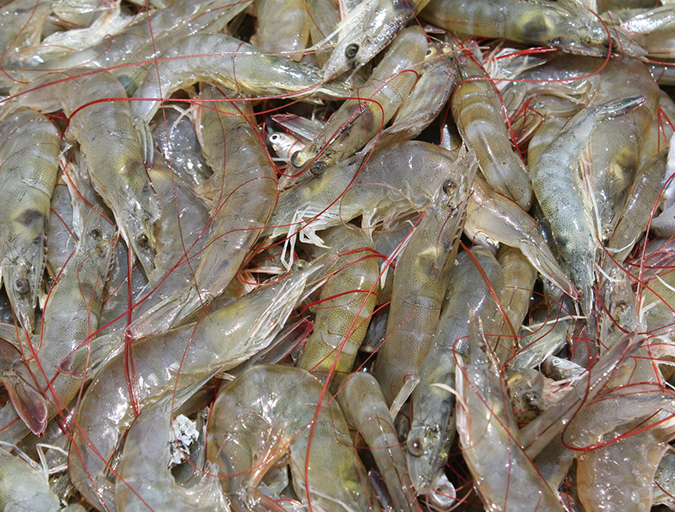
Intelligence
Critical decisions for shrimp harvesting and packing, Part 1
Harvesting a crop of shrimp is a critical step for any shrimp farming venture. Several months of efforts and resources to properly raise a quality crop have already been invested, and this quality must be preserved. The decision to harvest involves consideration of various factors.
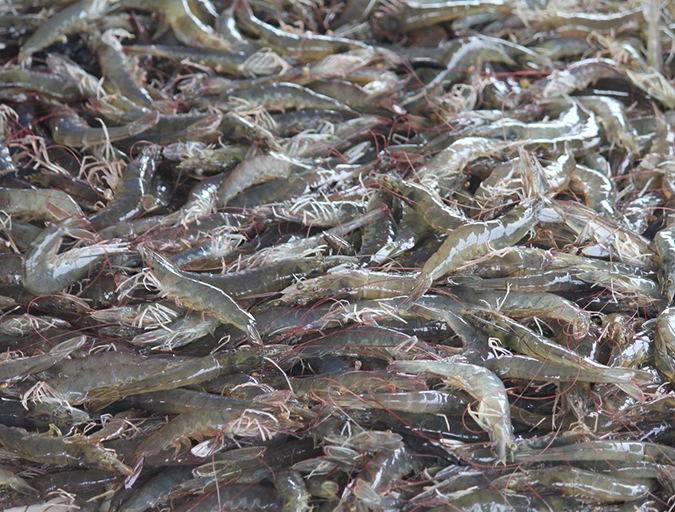
Intelligence
Critical decisions for shrimp harvesting and packing, Part 2
The decision to harvest involves consideration of various factors, including market prices, customers’ need, biomass and condition of the animals and others. Several steps are involved, most aimed at maintaining maximum quality of the animals as they are harvested, sacrificed, treated and transported to the plant and processed and packed.



